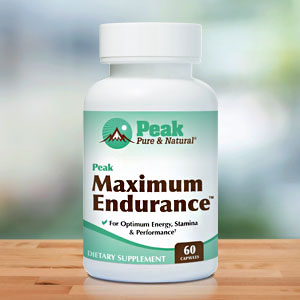Get Easy Health Digest™ in your inbox and don’t miss a thing when you subscribe today. Plus, get the free bonus report, Mother Nature’s Tips, Tricks and Remedies for Cholesterol, Blood Pressure & Blood Sugar as my way of saying welcome to the community!
Two factors that weaken your muscles more than aging

Getting older is no picnic. There are certain signs of aging that we all hope to escape, but that’s much easier said than done.
Consider what happens to your muscles…
Research shows we can expect a substantial loss of muscle mass and strength (known as sarcopenia), decreased regenerative capacity (meaning muscle tissue that can’t repair itself) and loss of physical function — all thanks to aging skeletal muscle.
But what drives this decline — and is it just inevitable?
To answer that question researchers looked at “primary aging” — which may involve things we can’t control — and “secondary aging,” which may play a much bigger role in weakening our muscles than previously thought…
Two key drivers of muscle changes
The age-related loss of muscle tissue starts as early as our 40s. By age 50, we’re losing 1 to 2 percent of our muscle mass every year as our bodies become less able to convert protein into muscle. And in our 60s and 70s, this loss becomes even more rapid as we lose muscle fibers — and what fibers we still have begin to shrink.
This sets off a vicious cycle: we become less active (because it gets harder) and that directly contributes to further muscle deterioration.
A team of Russian researchers decided to dig deeper into the age-related changes that occur in skeletal muscle. What they found was that chronic inflammation and physical inactivity affected these changes more than primary aging.
In short, the study shows aging muscles are affected more by physical inactivity and chronic inflammation than they are by the aging process itself!
That’s because these two factors influence the expression of 4,000 genes that regulate processes such as mitochondrial function, protein balance and immune and inflammatory responses. These processes can influence healthy aging or — gone wrong — can make it all go awry.
By contrast, they found only about 200 genes where their expression was related to primary aging rather than other factors.
This is one more example of epigenetics, or how lifestyle impacts genes. Epigenetic changes are reversible and do not change your DNA sequence, but they can change how your body reads a DNA sequence and how it is expressed to affect your body and your health.
A recipe for better muscle strength
It’s clear there are two things we need to do to help protect our muscles as we age: reduce inflammation and move our bodies.
Certain exercises are great for both movement and muscle-building. Walking, swimming, dancing, tennis and elliptical training all combine strength training and aerobic exercise. And yoga can actually help tame inflammation while strengthening your muscles.
Combining exercise with protein helps you build muscle mass as you get older. Including protein with every meal is especially important if you want to protect your aging muscles, as it helps boost amino acid activity.
There are a few steps you can take to tackle age-related inflammation, or “inflammaging” as some call it, while lowering levels of C-reactive protein (CRP), an inflammation marker associated with reduced muscle mass.
The Mediterranean diet can quench inflammation. Try to eat plenty of these five foods.
Supplements may also help in various ways…
- Vitamin C supports immune health and has the added benefit of lowering CRP levels by 25 percent.
- Vitamin D also supports immune health — and has been demonstrated to protect against declining mitochondria related to muscle weakness.
- Omega-3s, found in fish or krill oil supplements, can curb chronic inflammation and CRP while potentially doubling muscle strength.
- The antioxidant resveratrol can also manage inflammation while giving your muscles a boost. Research shows resveratrol may help maintain muscle mass and decrease the loss of muscle fiber.
Editor’s note: Did you know that when you take your body from acid to alkaline you can boost your energy, lose weight, soothe digestion, avoid illness and achieve wellness? Click here to discover The Alkaline Secret to Ultimate Vitality and revive your life today!
Sources:














